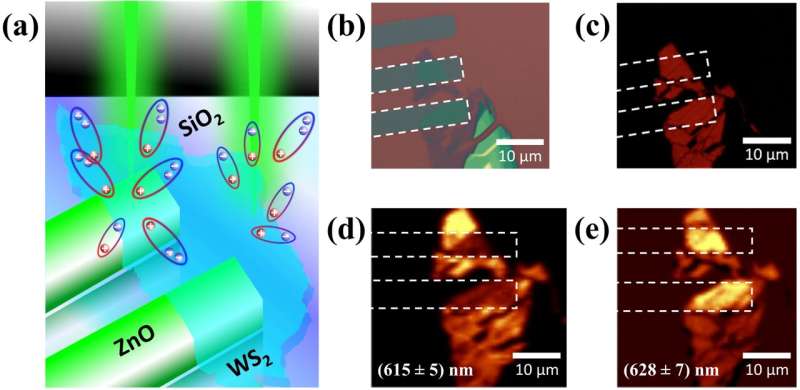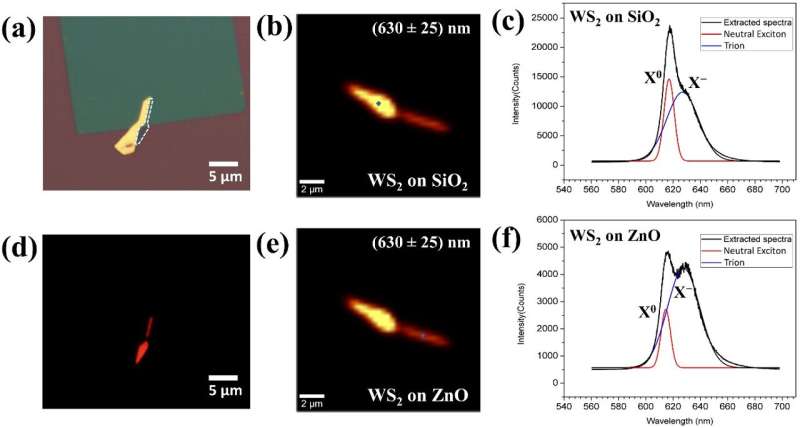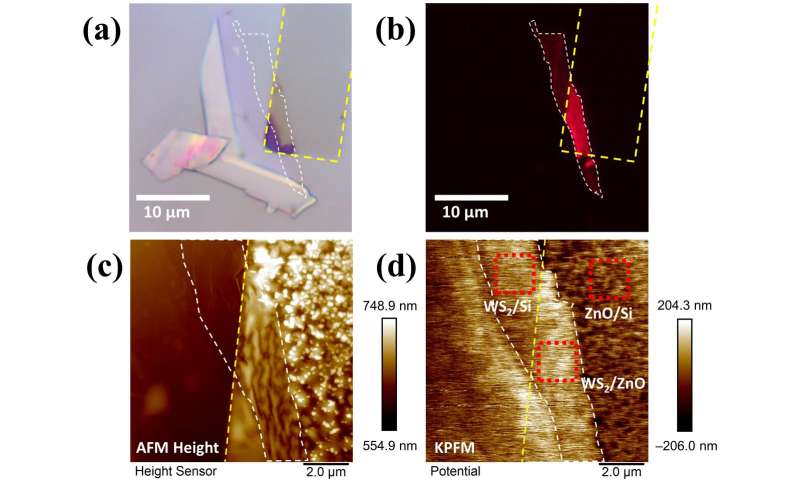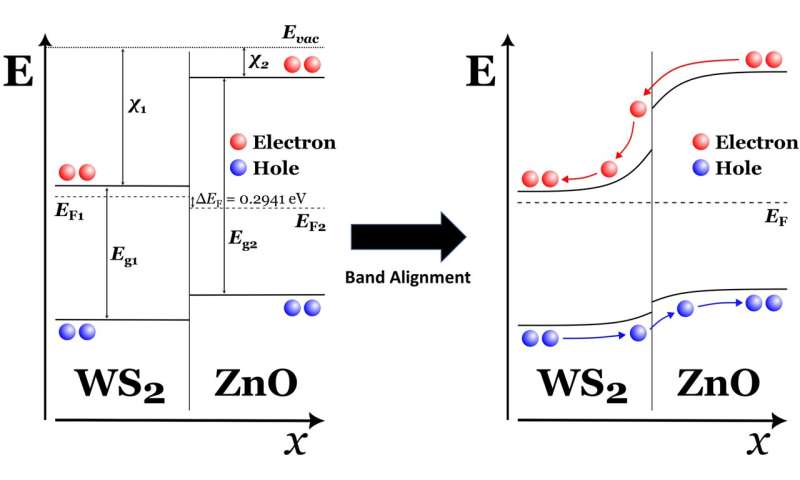Heterostructure lets excitons carry more information for quantum applications

Excitons are electron-hole pairs in semiconductors that are electrostatically bound by strong Coulombic interactions. In ultrathin 2D semiconductors that are a few atoms thick (typically ~0.7 nm), the decreased z-dimension presents strong quantum confinement and reduced dielectric effects that feature a plethora of stable excitonic species (neutral excitons, trions, biexcitons, defect-bound excitons).
Within such a matrix environment, the high binding energy between the electron and hole ensures exciton stability and long lifetime that translates to increased probability of radiative recombination to form photons.
In particular, trions and neutral excitons have attracted attention over the years due to their outstanding stability and contribution to the overall emission profile of WS2 monolayers.
Comparatively, trions are composite fermions comprising a neutral exciton with an additional charge carrier (electron or hole); either in the form of a negative trion (two electrons with one hole) or positive trion (one electron with two holes) with the charges bound under similar electrostatic attraction.
Due to the presence of the additional charge carrier, trions are expected to hold degrees of freedom in spin and charge, in addition to the valley degree of freedom available for these excitonic species. From this perspective, trions are expected to hold a greater deal of information as compared to excitons and electrons, prompting heightened potential towards the recent boom in quantum applications (quantum optics, quantum computing, quantum materials).

Subsequently when WS2 is emplaced upon a thin layer of sputtered ZnO film, charges migrate across the junction due to the inherent difference in surface potentials or work function between the two materials.
By establishing what’s known as a type-II staggered gap alignment due to the different band edge positions for these materials, the electrons subsequently migrate into WS2 while the holes gather at ZnO. Consequentially, the excessive amounts of electrons in WS2 promotes trion formation when photoexcited electron-hole pairs recombine in the presence of these electrons.
“With a careful selection of these semiconductor components with varying band features, we are able to establish the type-II band alignment to induce charge separation for improved trion emission.” said Dr. Poh, corresponding author of the paper. “With subsequent KPFM measurements, we were able to ascertain the relative work function between these materials to reconstruct the band alignment model, reiterating the mechanics associated with the observed phenomenon.”
-

KPFM and AFM details pertaining to workfunction changes across the heterojunction domain. Credit: Science China Press
-
![Heterostructure lets excitons carry more information for quantum applications]()
Relative band positions of the respective WS2 and ZnO components before and after heterojunction contact, demonstrating the charge movement associated with the band alignment process. Credit: Science China Press
“The spectroscopic increase in trion-to-exciton ratio proves that we can utilize the simple strategy of a heterostructure to produce permanent and stable trions, as compared to photodoping strategies where trion populations rely heavily upon the measurement excitation source,” Mr. Leong, the first author of the paper, added.
With these initial findings, the team envisions that further exploration into a broader range of material candidates and complex heterostructure geometries would improve the exciton-to-trion conversion efficiency, targeted at achieving emissions comprised purely of trions, which may provide even greater value in the exploration of high efficiency quantum devices.
The work is published in the journal Science China Information Sciences.
More information:
Jin Feng Leong et al, Selective enriching of trionic emission in a WS2-ZnO hybrid through type-II band alignment, Science China Information Sciences (2023). DOI: 10.1007/s11432-022-3719-4
Citation:
Heterostructure lets excitons carry more information for quantum applications (2023, June 21)
retrieved 21 June 2023
from https://phys.org/news/2023-06-heterostructure-excitons-quantum-applications.html
This document is subject to copyright. Apart from any fair dealing for the purpose of private study or research, no
part may be reproduced without the written permission. The content is provided for information purposes only.
For all the latest Science News Click Here
For the latest news and updates, follow us on Google News.


